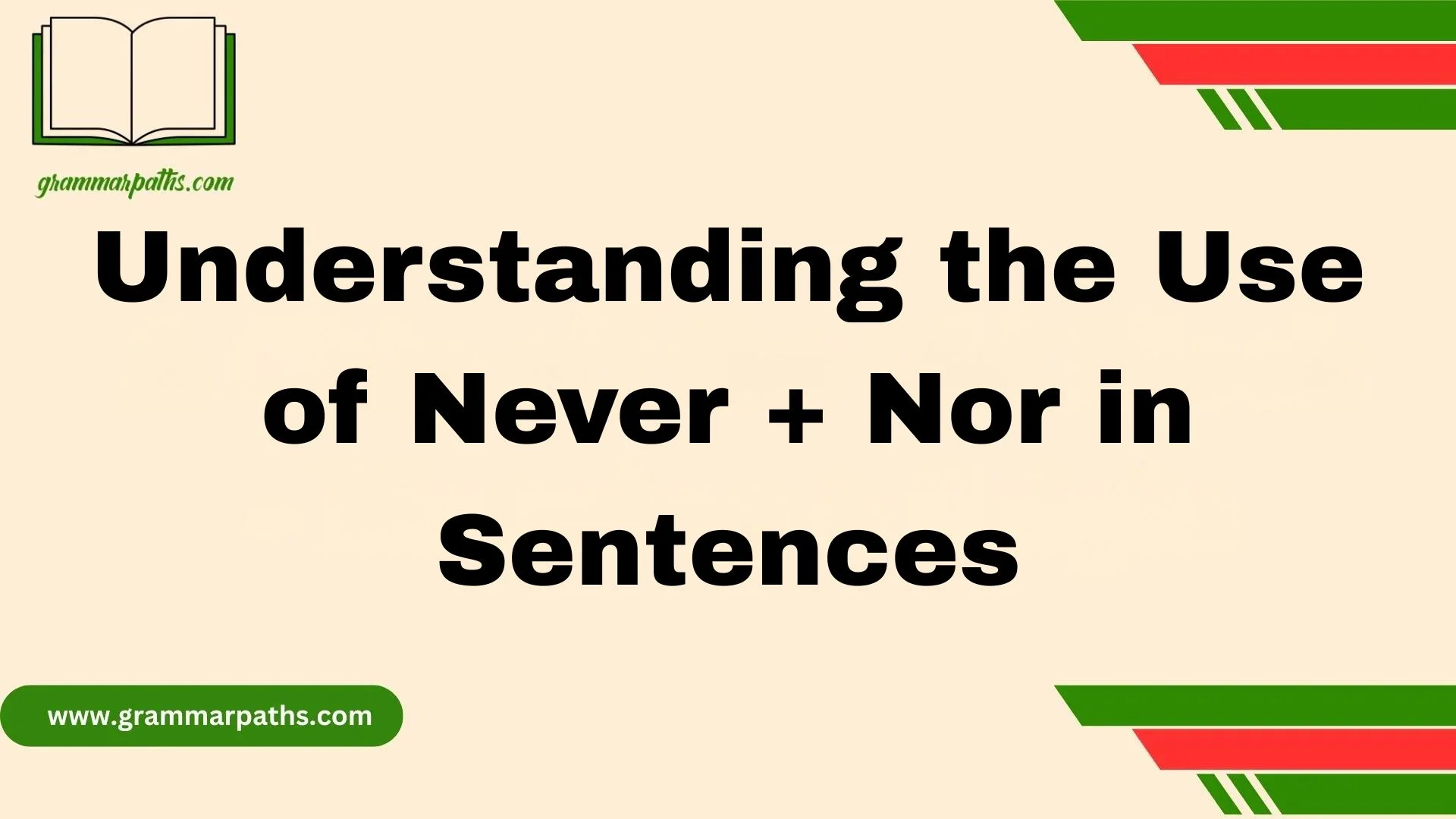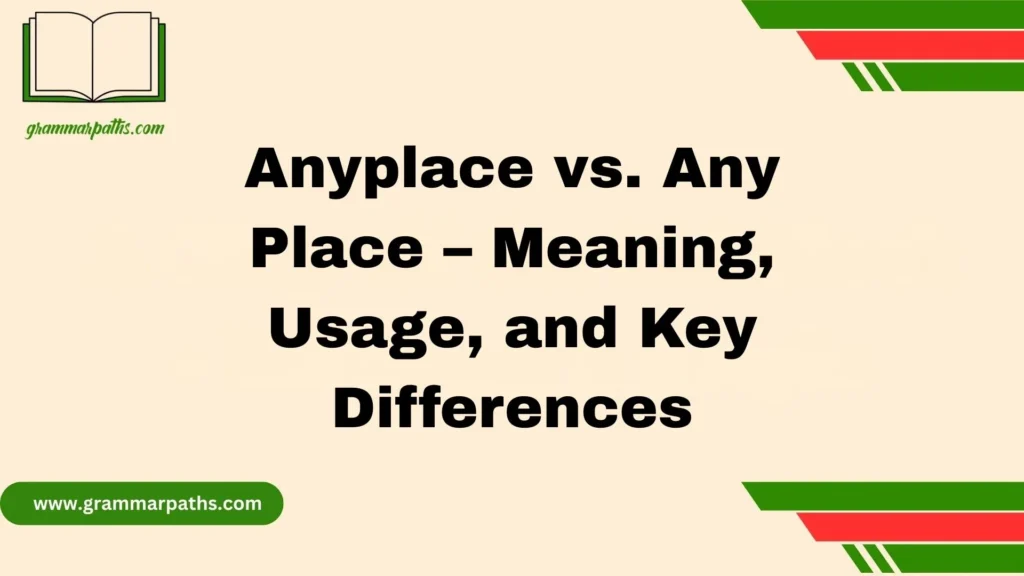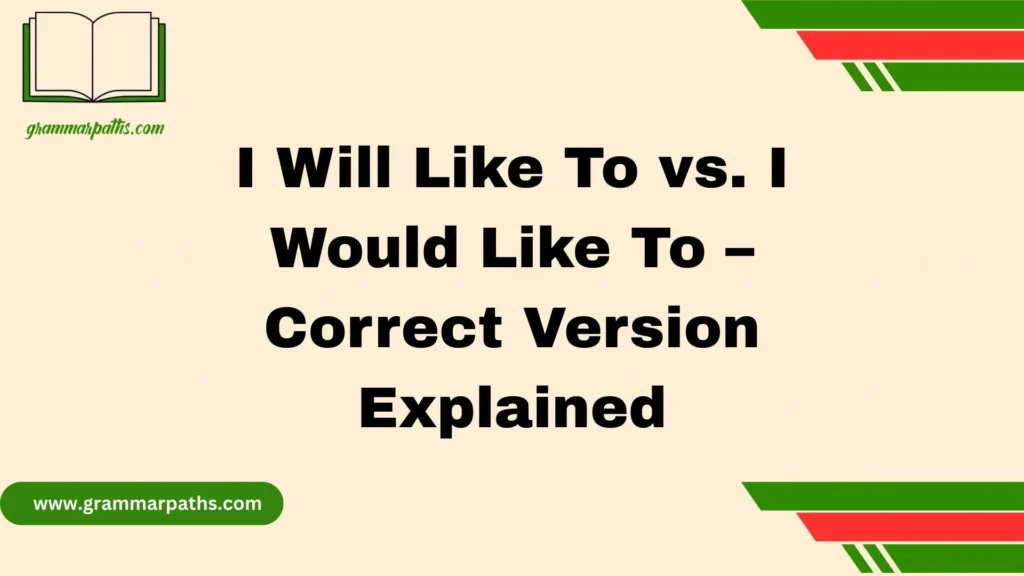When it comes to writing in English, some ESL students feel it’s tricky or even hard to use the phrase “never + nor” without repeating yourself. But once you begin understanding how these two small words pack a powerful punch, you’ll see just how crisp, clear, and refined your sentences become. In fact, Understanding the Use of Never + Nor in Sentences has helped many learners, including myself, to avoid the common puzzle of overusing negatives and instead create a structure that brings a more solid, classic, and confident tone to your writing—especially in formal, literary, or persuasive contexts. I still remember the first time I saw the sentence, “I have never enjoyed running, nor do I enjoy swimming.” It was like a toolbox moment, where the right tools finally clicked into place.
We often want to say no to two things, and this combination offers a clearer, stronger way to do so. Never gives the emphasis of not ever, and nor then joins another item, phrase, or clause with grace. These are coordinating or correlative conjunctions, just like “and” or “but,” and they’re perfect for joining dependent and independent clauses while keeping the rhythm of the sentence intact. A pro tip from my own toolkit: place the auxiliary verb before the subject in the second part of the statement to maintain grammatical correctness—this keeps the construction smooth and the negation clear. There’s more here than meets the eye. Whether you’re a native speaker crafting elegant prose or a learner trying to avoid confusing errors, this small phrase can truly help your ideas shine with timeless style.
Why “Never + Nor” Confuses Many English Speakers
Imagine hearing someone say:
“I have never nor will I ever do that.”
Sounds awkward, right? You’re not alone if this makes you pause. The mix of never and nor isn’t common in casual conversation, and many struggle to use it correctly or at all.
Yet, mastering this phrase helps you express continued negative thoughts smoothly. Whether you’re writing an essay, crafting a formal letter, or just want to sound more natural, understanding how to use never + nor will boost your confidence and clarity.
Understanding Negative Constructions in English
Before diving into never + nor, let’s refresh how English handles negatives. Negative constructions usually involve words like no, not, never, neither, and nor. Each plays a distinct role.
Key Negative Words and Their Functions
| Word | Type | Function in Sentence | Example |
| No | Determiner | Negates a noun | There is no milk left. |
| Not | Adverb | Negates verbs or adjectives | She is not happy. |
| Never | Adverb | Negates actions or states in time | I never eat meat. |
| Neither | Pronoun/Determiner | Negates two or more nouns or subjects | Neither option works for me. |
| Nor | Coordinating Conjunction | Connects two negative phrases or clauses | He doesn’t like coffee nor tea. |
English avoids double negatives in formal speech because they can create confusion or unintended positive meanings. For example, “I don’t know nothing” technically means “I know something.” But phrases like never + nor allow you to continue negatives smoothly without confusion.
Breaking Down “Never + Nor”: The Grammar Basics
At its core, never is an adverb meaning not at any time. It denies an action or occurrence altogether. Nor is a coordinating conjunction that links two or more negative ideas.
When combined, never + nor continues a negative statement without switching to a positive or neutral word. For example:
- ✅ “I’ve never traveled to Japan, nor do I plan to in the near future.”
- ❌ “I’ve never traveled to Japan or do I plan to.” (Incorrect)
The first sentence flows correctly because nor connects the ongoing negative thought.
The Role of “Nor” in English Grammar
Nor is unique because it doesn’t appear alone—it typically follows another negative word like not, never, no, neither. Its main job is to connect negative clauses or phrases without repeating “not.”
Examples of “Nor” in Action:
- She doesn’t sing, nor does she dance.
- We have no money, nor any way to earn it.
- He never lied, nor did he cheat.
Notice how nor works similarly to and, but it’s used only when both connected parts are negative.
Correlative Constructions: “Neither… Nor…” vs. “Never… Nor…”
Many people confuse neither… nor… with never… nor…, but they aren’t interchangeable.
- Neither… nor… → Used to negate two subjects or objects.
- Neither John nor Mary attended the meeting.
- Never… nor… → Used when the first clause is negative with never, and you want to continue that negative meaning.
- He has never taken a bribe, nor has he abused his power.
Quick Rule of Thumb:
- Use neither… nor… when listing two negative options.
- Use never… nor… when extending a single negative action or state.
Correct Usage of “Never + Nor” in Sentences
To use never + nor correctly:
- Start with a clause containing never.
- Follow it with a second negative clause introduced by nor.
- Ensure the verb in the second clause is inverted (like in questions).
Correct Examples:
- She’s never broken a promise, nor has she betrayed anyone’s trust.
- I never went to that restaurant, nor will I ever.
- He never lied about his income, nor did he hide expenses.
Incorrect Examples:
- I never went to that restaurant, or will I ever.
- She’s never broken a promise, and nor betrayed trust.
Continuing a Negative Statement: Advanced Nuances
Good writers use never + nor to maintain emphasis without sounding repetitive. Instead of starting a new sentence with another negative word, nor extends the thought seamlessly.
Case Study: Formal vs. Casual
- Formal: The committee has never approved such actions, nor has it considered them appropriate.
- Casual: The committee has never approved that. They also didn’t think it was okay.
The formal version sounds polished and connected, making it ideal for professional or academic writing. The casual form works for conversations but lacks flow.
Common Mistakes and Misconceptions
Many mistakes happen when people try to link negatives. Let’s clear up the confusion:
| Mistake | Why It’s Wrong | Correct Version |
| Never or instead of Never nor | “Or” implies choice, not continuation | I never saw him, nor did I hear his voice. |
| Missing verb inversion after “nor” | Grammar rule requires inversion | Nor will I join, not Nor I will join. |
| Using double negatives unnecessarily | Leads to ambiguity or positive meaning | I never do nothing → I never do anything. |
Practical Alternatives for Better Clarity
Sometimes never + nor sounds too formal for modern US English. Writers often use alternatives like:
- I never saw him and don’t plan to.
- I didn’t see him, let alone talk to him.
- She never wanted to join and won’t in the future.
Alternative Phrases
| Alternative Phrase | When to Use |
| and not | Informal writing or speech |
| let alone | To emphasize an unlikely second action |
| and neither | Connecting two negatives casually |
Emphasizing Negatives with “Neither + Nor”
For stronger emphasis, you might prefer neither… nor…. This works when negating two parallel ideas:
- Neither the CEO nor the board approved the merger.
- She chose neither coffee nor tea.
Unlike never + nor, this construction doesn’t require verb inversion, making it easier for everyday sentences.
Style Choices: Introducing Variation
Repeating negatives can make writing clunky. Skilled writers mix structures for variety:
- He never apologized, nor did he offer an explanation.
- He didn’t apologize and offered no explanation either.
- He failed to apologize, let alone explain himself.
Adding these variations prevents monotony and makes sentences sound more natural.
Quick Reference: Rules and Examples
Here’s a quick guide you can bookmark:
- Use never + nor to continue a negative statement.
- Invert the subject and verb after nor.
- Use neither… nor… for listing two negatives.
- Avoid never or—it’s incorrect in this context.
Mini Quiz:
- Choose the correct sentence:
a) I never liked soccer, or did I play it.
b) I never liked soccer, nor did I play it. ✅ - Fill in the blank: She never lied, ___ did she cheat.
- Answer: nor
Conclusion:
Using never + nor might seem tricky at first, but with the right tools in your language toolkit, it quickly becomes simple. By understanding its grammatical mechanics, you can avoid confusing sentences and craft a clearer, stronger, and timeless style of writing.
Whether you’re a native speaker or an ESL student, mastering this combination ensures your negatives stay crisp, balanced, and perfectly grammatically correct. Over time, this small yet powerful tool adds a refined tone and elegant flair to your prose, helping your ideas truly shine.
FAQs
1. Can I use “never” without “nor”?
Yes, you can, but using never + nor together is perfectly grammatically correct when denying two or more things in one sentence.
2. Is “never + nor” old-fashioned?
Some people feel it has an old-fashioned tone, but it’s still commonly used in formal or persuasive writing, giving a classic, timeless rhythm.
3. What’s the difference between “nor” and “neither”?
“Neither” usually starts a negative statement, while “nor” acts as a coordinating conjunction to join clauses or phrases after never or another negative word.
4. Can beginners easily learn to use it?
Absolutely. With practice and understanding the structure, even ESL learners can confidently use never + nor without repeating themselves.
5. Why does this phrase sound smoother than just saying “and not”?
Using nor after never creates a refined, rhythmic flow, making your writing more persuasive and balanced compared to a simple “and not.”

Emma Brooke is a passionate language expert and contributor at GrammarPaths.com, where she helps learners navigate the complexities of English grammar, idioms, and effective writing. With a strong academic background and years of teaching experience, Emma excels at turning tricky grammar rules into simple, practical lessons that readers can easily grasp.












